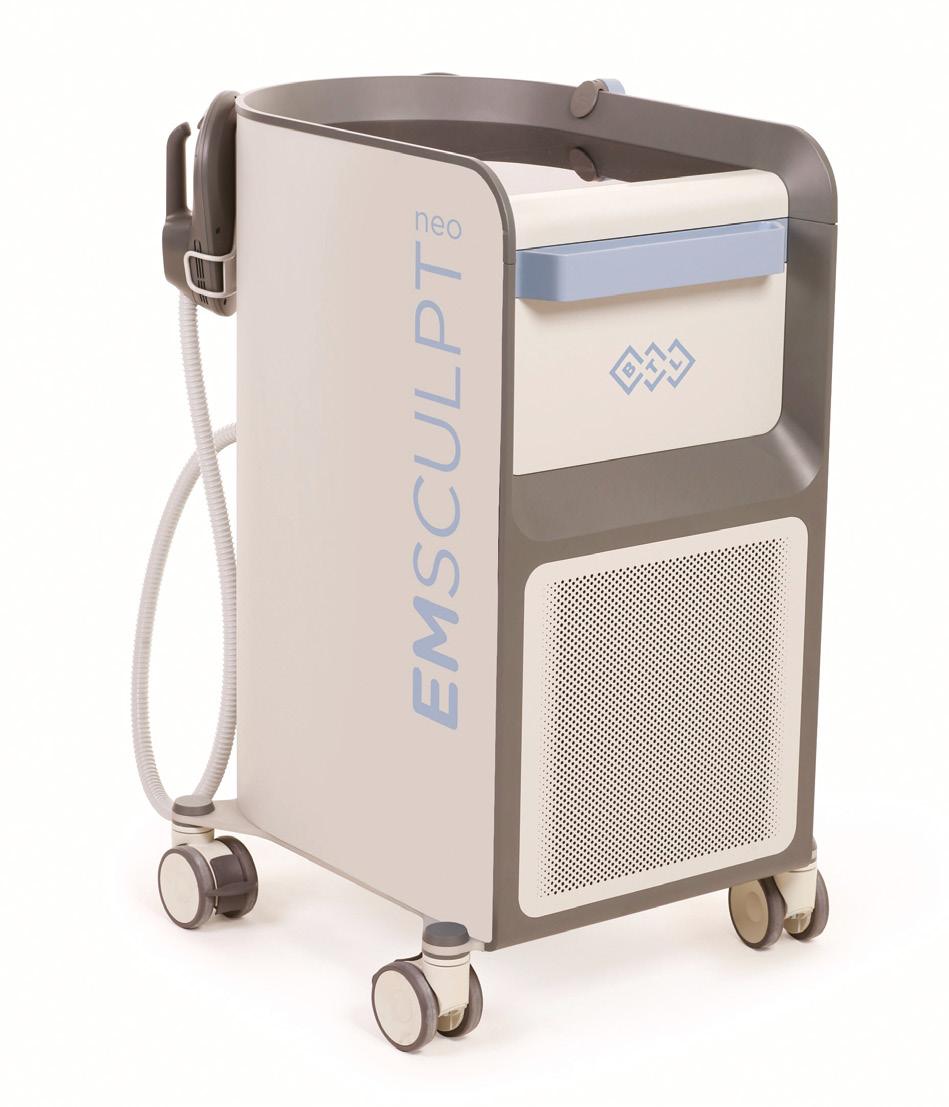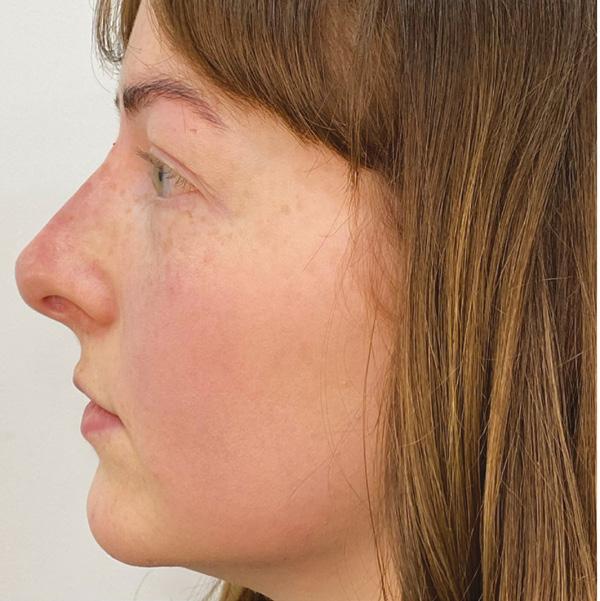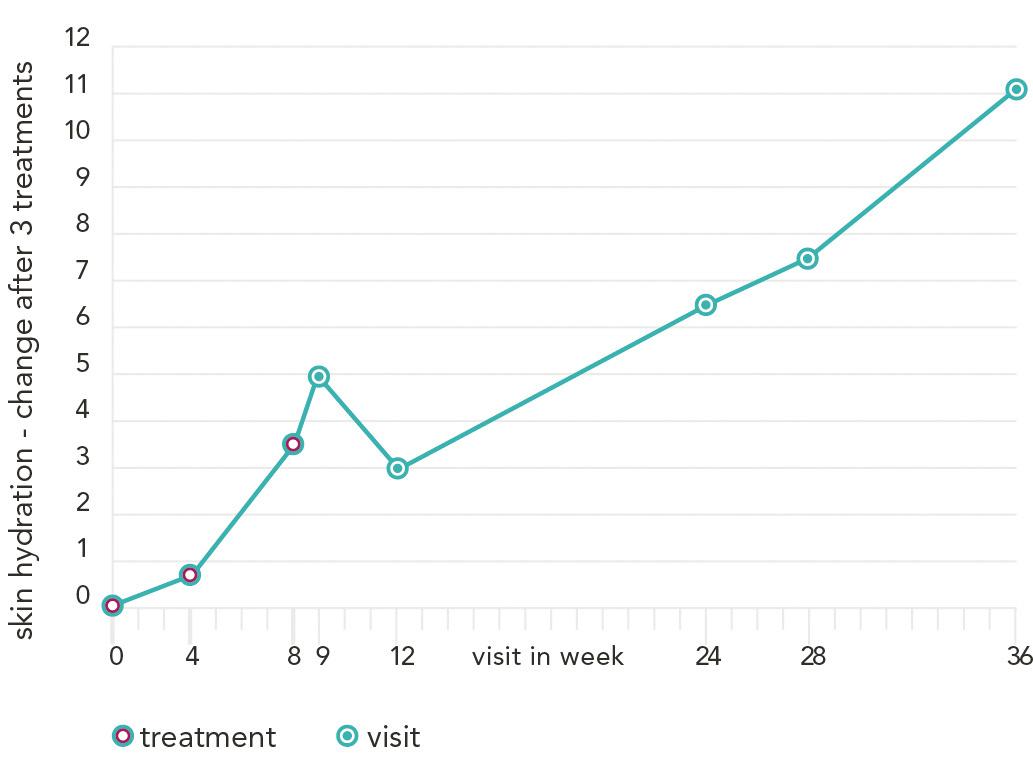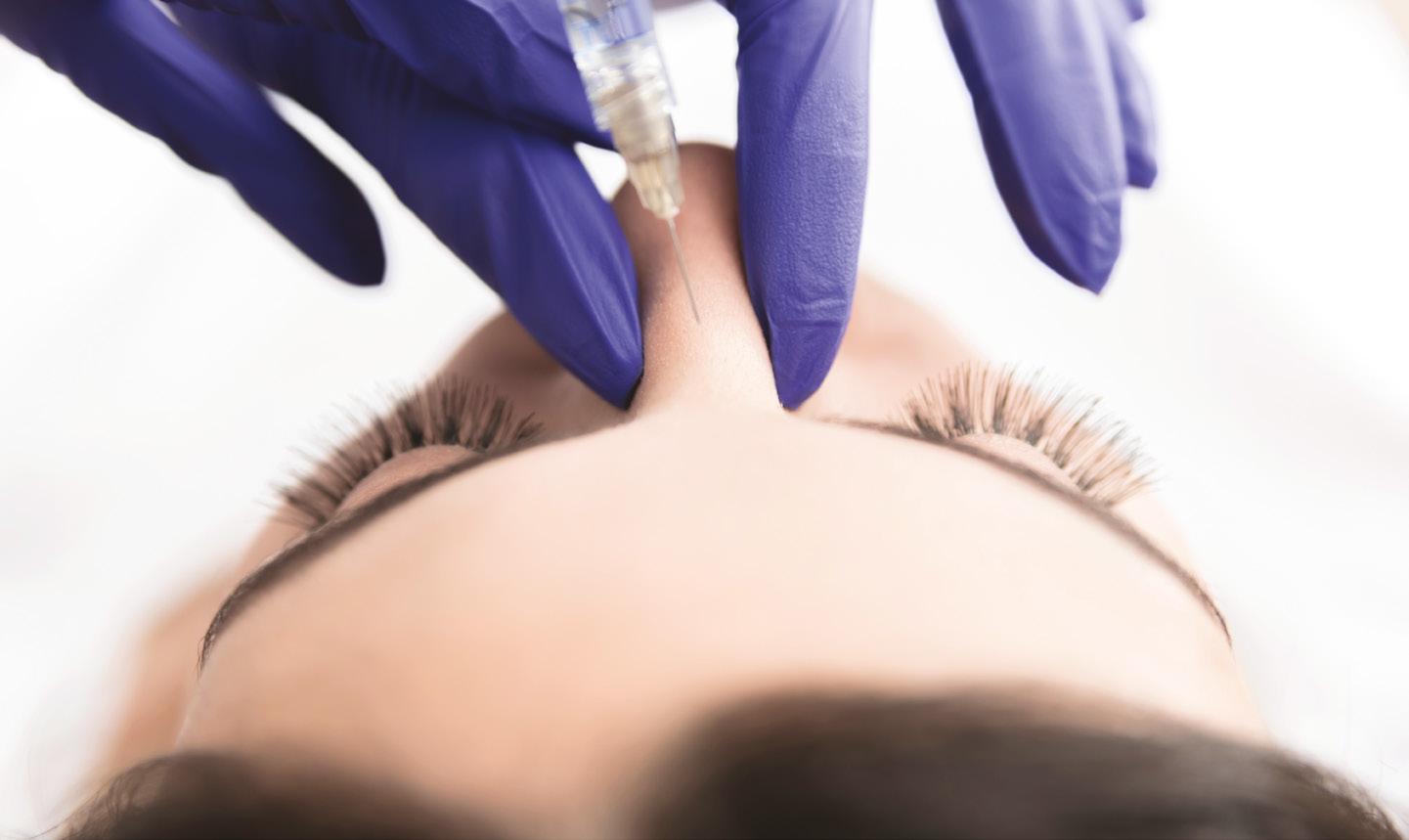@aestheticsgroup
@aestheticsjournaluk
Aesthetics
aestheticsjournal.com
Needle-free pens and fillers
Understanding Needle-free Pens Dr Ashwin Soni explores the rising trend of needle-free filler injector pens There has been a recent growing trend of needle-free filler injector pens. It is concerning that the use of such devices has gone viral on various social media platforms, including TikTok, with young women and even children injecting themselves with filler from injector pens, most commonly in the lips and the face.1,2 Many of these filler pens are readily available for any member of the public to buy across different websites and apps online, including Amazon and eBay. This article aims to explore the mechanism and science behind needle-free injector pens as well as their use both inside and outside clinical practice.
transported directly across the skin in the subcutaneous or intramuscular regions via a high velocity, which can disperse the drug over a larger area compared to a syringe technique.4,5 It has been shown in the literature that the molecules are dispersed more widely in the tissue.3 This has proven to be an effective treatment for insulin administration and other types of medications and this same technology is now being used for filler treatment, and other aesthetic procedures, such as botulinum toxin treatment and mesotherapy.
So how does the use of these types of needle-free injector pens translate to the aesthetic world, specifically for filler-based treatment? The advantages of this needlefree approach, which is being advertised, is that it is beneficial for those with a needle phobia, it causes little or no pain and there is no risk of needle-stick injuries. There are several studies that have demonstrated effective treatment with pneumatic administration of filler with needlefree pens.6,7 For example, one study involved 34 participants that were treated at three clinical sites each on the face, neck, chest, and dorsal hands (total of 69 sites). The authors concluded that pneumatic injection of hyaluronic acid under high pressure provides a safe, well-tolerated and effective method for improving the appearance of wrinkles.8 The papers referenced have small sample sizes but have demonstrated that it is possible to have safe administration of filler with needle-free pens, with good patient satisfaction. It should be noted that these studies were performed by medical professionals with excellent anatomical knowledge.
Treatment safety Many filler pens are being advertised on the internet as being risk-free, given that there are no needles on the device. Numerous websites, as well as some aesthetic training providers, also make the claim that there are no risks associated with injecting filler this way, and that no complications can result. There is a lack of data in the literature with regards to complications associated with needle-free filler injections, but does that really mean that there are no complications? The issue of complications and vascular occlusion could result as a consequence of a thicker and more viscous filler coming out at a
A background on needle-free injector pens Needle-free injector pens are commonly used in the management of diabetic patients who are treated with insulin and have been widely used in other areas of medicine, such as with vaccine administration. The mechanism of action of a needle-free injector works by forming and opening cracks in the skin due to the high pressure and velocity of these pneumatic air pressure devices, with the high-speed stream penetrating the skin.3 Subsequently, the molecules are
Figure 1: How the product of a needle-free filler pen disperses compared to a needle
Reproduced from Aesthetics | Volume 8/Issue 8 - July 2021





















